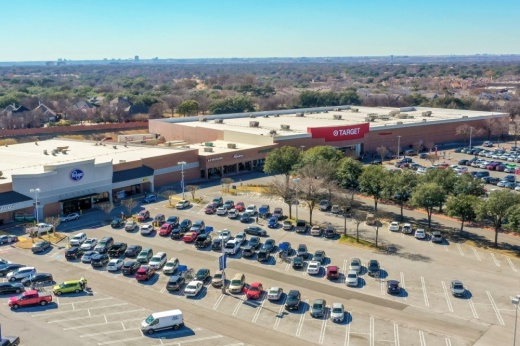Young spoke with Community Impact about the reasons his company has seen growth in the real estate market and how it tracks what businesses start leases in the area. Answers have been edited for length, style and clarity.
What could you attribute the growth in workout-focused businesses?
There's two moving parts. One has to relate to the consumer and then and then the other happens to relate to commercial real estate. On the consumer side, the pandemic—we learned fresh air was important. That means just about every restaurant was putting a patio outside. The next thing was that health and wellness was re-energized and took a new new look, if you will. So consumers, once the masks were off, there was fresh air, but they also knew about health and wellness and so that morphed into almost a cultural kind of thing. You know, going to the gym with other people and looking good. I know that sounds kind of odd, but it's that the consumer was ripe and ready for this to happen. And then take the real estate side. So, all sudden vacancies that were created by closing of major retailers or bankruptcy of the Bed Bath & Beyond and Tuesday Mornings. What happened was, these gyms realized that that could be fertile for them to go get memberships and be in the markets where rooftops were there and customers were there.
Can you give an example you have seen when it comes to filling a vacancy in a shopping center?
We have a property in Addison, and it's called Addison Town Center. And we have just under 40,000-square-foot vacancy that actually was a former fitness facility. And this vacancy there, the market's turning around, but there's not a lot of new construction. And then for this facility, we had four prospects; one was a traditional soft goods store, a Burlington Coat Factory, but the others were three different fitness groups. We just finished this year a lease with EōS Fitness in that shopping center [it will open in 2025]. If you take EōS Fitness, Crunch Fitness, Fitness Connection, Club Four Fitness, and then you take Planet Fitness and you take LA Fitness and Lifetime Fitness, all of these uses become attractive to landlords with big vacancies.
How much has the perception of gyms changed over time?
In the past they were looked at like, "We don’t know we want them in a shopping center," based on restrictions that maybe a grocery store had on parking. Now, they drive people to shopping centers. They became kind of their own anchor, along with Target or Kroger or whatever is there. I think the combination that the consumer has a need for this and the real estate side, these are ways landlords can backfill vacancies. And generally speaking, they add another draw and amenity in shopping centers. We're filling up vacancies that might have been hard to do in the past, and now they've become a great opportunity with the fitness category.
Is there more of a push to fill empty space than build?
Absolutely. Interest rates and construction costs are going to be more expensive. So these existing retail can be converted or added is absolutely the best. That’s what happened when you had a Bed Bath & Beyond or Tuesday Morning to name a few, that put new inventory on the market. So expanding tenants gobbled them up very, very quickly. And it really was what's happening is that any of those new vacancies, because demand is still high in North Texas, they're gonna be filled, they're gonna be backfilled. Maybe not the traditional stores, but clearly food, entertainment, and health and wellness are big now.
In the past, it seemed like big-box vacancies would stay vacant for a long time, but it sounds like that is changing now?
That is totally accurate. That's exactly what's happened. So really, if you think about it, space became used differently. If you have to divide it and put two tenants in there, that's expensive, partner, just to make that happen. So many of these gyms because they had a larger footprint, they were able to get the benefit of not subdividing space. The landlord liked it and it just made sense. All of a sudden you're looking here and they're everywhere. I don't think that they're going to slow down anytime soon. And one of those reasons is because of the migration, job growth, population, and the fact that the consumer has health and fitness as part of their daily regimen more so now than ever.





